The Art of Reading a Beach: An Insider’s Guide to Coasts
I’ve spent a huge part of my life walking, studying, and just plain enjoying coastlines all over the world. It’s not just about finding a postcard-perfect spot; it’s about really understanding the personality of a place. People always want a list of the “best” beaches, but honestly, beauty is in the eye of the beholder. A wild, rocky shore can be just as breathtaking as a calm, white-sand paradise.
In this article
The real skill isn’t just finding a famous beach. It’s about learning to “read” any beach you happen to be standing on. Once you know what to look for, you can understand its story, its hidden dangers, and all the cool things it has to offer.
I’ve seen how a lack of understanding can ruin a trip. A beach that looks idyllic in a photo might have notoriously dangerous currents, or that huge sandy expanse you saw at 10 AM could be totally gone by the afternoon tide. This guide is all about sharing the pro’s approach—looking at the science, the observation techniques, and the practical know-how that will keep you safe and make your visit so much better.
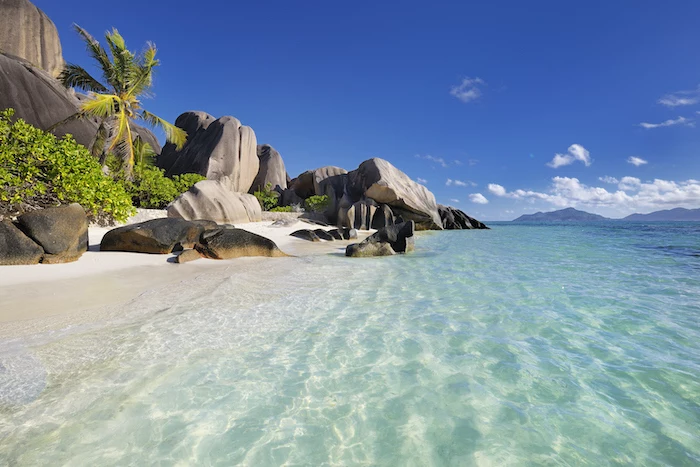
What the Sand is Telling You
The first thing I do on any beach is pay attention to what’s under my feet. The color and texture of the sand tell you everything about its history. It’s basically just tiny bits of weathered rock, minerals, or even organic stuff.
- Classic Tan Sand: This is your most common type, made from weathered quartz from continental rocks. It’s durable, familiar, and makes up a ton of the world’s beaches.
- Brilliant White Sand: This is the stuff of dreams. It’s not rock at all, but the ground-up skeletons of coral and shells. In some places, a lot of this sand has even passed through the digestive system of parrotfish! A huge bonus: this sand stays much cooler on your feet because it reflects sunlight so well.
- Volcanic Black Sand: Found on younger islands, this sand is made from eroded basalt. It’s stunning, but a heads-up: it can get incredibly hot in the sun. We’re talking “sprinting to the water” hot. You can even find rare green sand beaches colored by a mineral called olivine.
- Subtle Pink Sand: Some beaches have a beautiful pinkish glow. This color comes from the crushed shells of tiny organisms called Foraminifera, whose reddish shells mix in with the white sand.
Oh yeah, the grain size matters, too. Super-fine, powdery sand packs down hard when it’s wet, which is fantastic for long walks. Coarse, shelly sand, on the other hand, is a real workout to walk on. A quick tip for families: that powdery sand is also way better for building sandcastles!
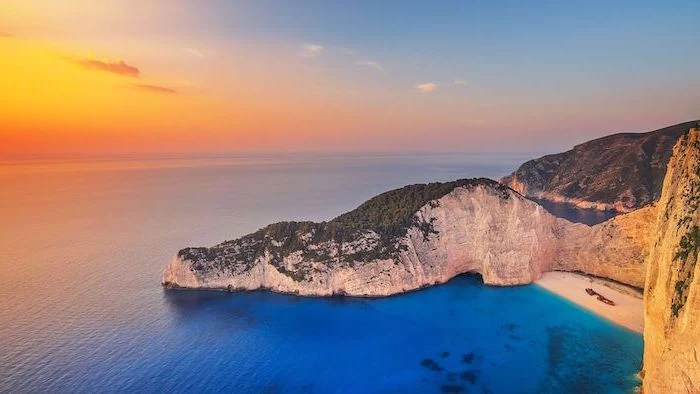
Decoding Water Color and Movement
That stunning turquoise water you see in photos? It’s not an accident. It’s a mix of super clear water (low on sediment) and a bright white sandy bottom that reflects light back up. The water itself absorbs the warmer colors of the spectrum, leaving those gorgeous blues and greens for our eyes.
In contrast, a deep, dark blue often means the water gets very deep, very quickly. With no shallow bottom to reflect light, you get that intense, dramatic color. And if the water looks a bit greenish, it’s often because of phytoplankton—tiny marine plants that are the foundation of the ocean’s food web.
But the most critical thing to understand is how the water moves. Tides are the slow, predictable rise and fall of the sea. A beach can look completely different at high and low tide. I once got totally absorbed in taking photos and came back to find my gear bag, which I thought was a safe distance from the water, getting swamped by the incoming tide. It’s a rookie mistake, but it happens! Forgetting to check a tide chart can leave you stranded or, at the very least, with wet stuff. These days, there’s no excuse—just pop open an app like Tides Near Me or Magic Seaweed on your phone before you head out.
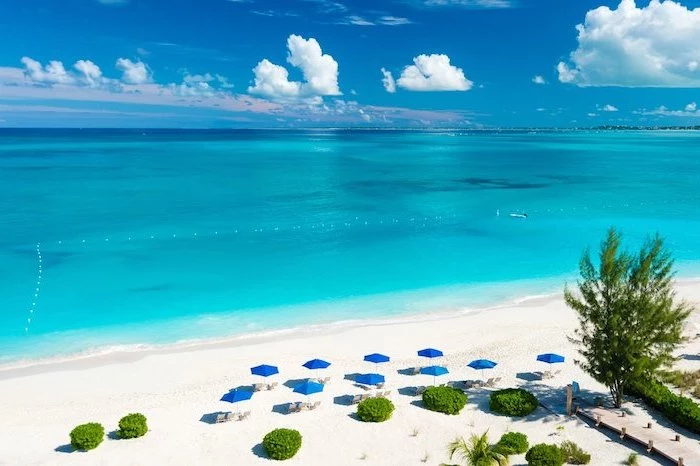
How to Assess a Beach in Five Minutes
Before you even lay down your towel, stop and take five. Find a slightly elevated spot if you can and just watch the water. This is a habit that has kept me and my teams safe for years. Don’t just glance; look for patterns.
A quick pro-tip: You can even do this from home. Before you go, pull up the beach on Google Maps and switch to the satellite view. You can often spot potential rip channels, rocky areas, or the general layout from above.
Here’s what to look for:
- Spot the Rip Currents: This is your #1 safety check. Rips are powerful channels of water pulling away from the shore. Look for a gap in the line of breaking waves, a channel of choppy or discolored water, or a line of foam moving steadily out to sea. See one? Make a mental note and stay far away.
- Find the High Tide Line: Scan the upper beach for a line of seaweed, driftwood, and other debris. That’s your high-water mark. Always set up your spot well above this line. I’ve seen countless people lose their coolers and bags to a rising tide.
- Check the Slope: The steepness of the beach is a big clue about wave energy. A steep beach usually means powerful waves and a strong backwash that can easily knock you over. A gently sloping beach almost always means calmer, more mellow conditions.
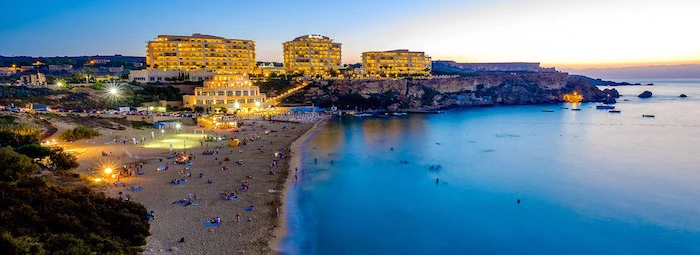
A Tale of Three Coasts: What to Expect
Not all beaches are created equal. Knowing the general personality of a region helps you match your trip to your expectations. Let’s compare three totally different coastal vibes.
The Caribbean is all about calm and relaxation. Many islands are built on ancient coral, creating a unique environment. You get those soft, white carbonate sands and vast offshore reefs that act as natural breakwaters. This creates famously calm, turquoise lagoons perfect for swimming and family fun. The main thing to watch out for is the intense sun, which reflects off the sand and water, so UV protection is non-negotiable.
The Mediterranean, on the other hand, is about tectonic drama and exploration. The coastlines are often mountainous, with smaller beaches tucked away in coves between towering cliffs. Think of a famous “shipwreck beach,” which only exists because part of a cliff collapsed. The sand is often coarser, mixed with pebbles, and the water gets deep fast. The vibe is scenic and adventurous, but the main challenge is access. A boat trip to one of these coves will likely set you back about €25 to €50 per person, so you have to plan and budget for it.
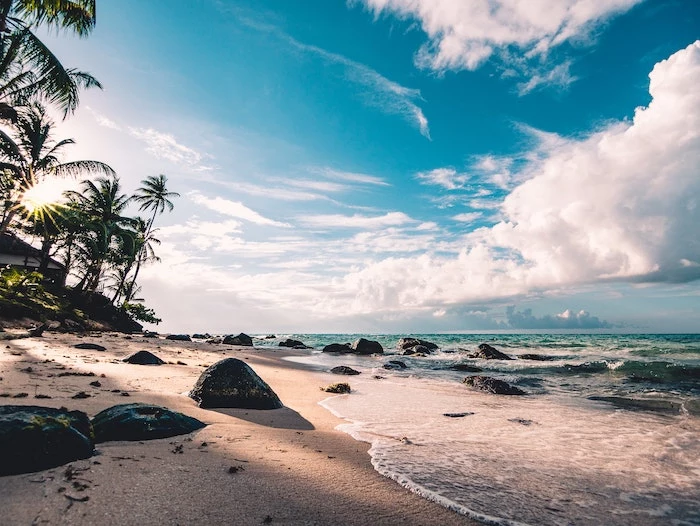
Then you have places like the Seychelles in the Indian Ocean, which offer something else entirely. These islands are made of ancient granite, resulting in a landscape of powdery white sand, turquoise water, and massive, sculptural boulders you won’t see anywhere else. It’s incredibly unique and a photographer’s dream. The vibe is remote and exotic, but the biggest hurdle is the logistics—it’s a long, often expensive trip to get there, and you have to pay close attention to the tides, which can shrink a beach to a tiny sliver.
Surviving and Thriving at the Coast
Knowing the basics is one thing, but being prepared for the unexpected is what really matters.
How to Handle a Rip Current
Let’s be crystal clear about this, because panic is the real enemy. If you get caught in a rip:
- DON’T PANIC. Seriously. Your first job is to stay calm and float to conserve energy. The rip is pulling you out, not under.
- DON’T fight the current. Trying to swim directly against it is a recipe for exhaustion.
- DO swim PARALLEL to the beach. Most rips are surprisingly narrow. Swim sideways along the shore, and you’ll likely pop out of the current pretty quickly.
- Then, swim back to shore at an angle, away from where the rip was.
Your Beach Day Go-Bag
The most common problems at the beach aren’t sharks; they’re sunburn and dehydration. My go-to beach kit is simple but essential:
- Mineral Sunscreen: Look for products with zinc oxide or titanium dioxide. Common chemical sunscreens with oxybenzone are bad for coral reefs. You can find reef-safe options at most dive shops or online for about $15-$25 a bottle.
- More Water Than You Need: Pack at least one extra bottle. The sun and wind dehydrate you faster than you think.
- A Wide-Brimmed Hat: Your scalp and face will thank you.
- Basic First-Aid: Include some band-aids, antiseptic wipes, and a small bottle of vinegar. By the way, vinegar is great for neutralizing the sting from many types of jellyfish.
Final Word: Be a Good Guest
No guide can replace your own good judgment. Always listen to local warnings—the flag system on guarded beaches is there for a reason. Red means stay out, yellow means use caution, and green means go for it. A purple flag often warns of marine critters like jellyfish.
And finally, the golden rule: leave the place better than you found it. Pack out everything you brought in, including bottle caps and cigarette butts. Remember that shells, sand, and coral are all part of a living ecosystem. Leave them where they belong. A beautiful beach is a gift, and it’s on all of us to keep it that way.
So get out there. Go to the coast. Sit, watch, and listen. The more you learn to read its language, the safer and more amazing your adventures will be.










